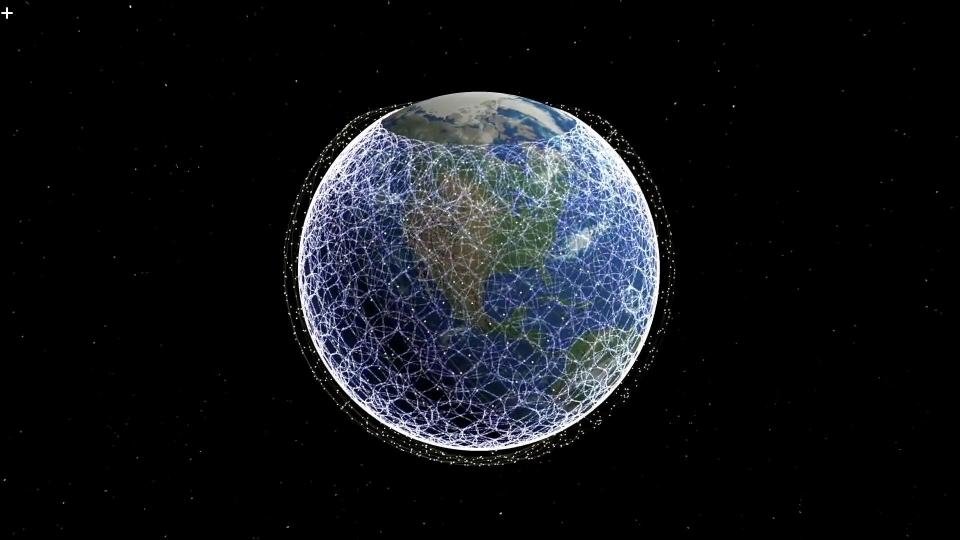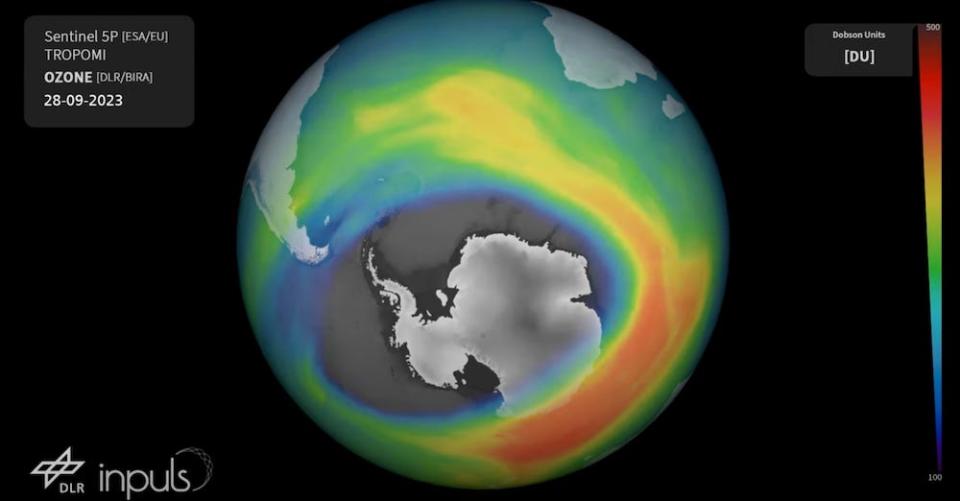Elon Musk's Starlink satellites could burn up the ozone layer, scientists warn
- Oops!Something went wrong.Please try again later.
Internet satellite networks re-entering the atmosphere en masse could damage the ozone layer, a study warns.
Elon Musk's Starlink is by far the biggest player in this field.
The effects could "push pause on the ozone success story in decades to come," the scientists said.
Internet satellite networks like Elon Musk's Starlink could contribute toward the depletion of the ozone layer, a new study claims.
Scientists at the University of Southern California's Department of Astronautical Engineering warned that the massive increase in low-earth orbit internet satellites could lead to damaging chemical reactions in the atmosphere.
There are currently more than 8,000 internet satellites in low-earth orbit, of which about 6,000 are Starlink ones, a press statement said.
All are made with large amounts of aluminum and designed with a short, roughly five-year lifespan, it added.
The problem comes when the satellites fall into Earth's atmosphere to burn up, producing aluminum oxide, the scientists said, triggering a chemical reaction that's highly destructive to the ozone.
The study, published last week in the peer-reviewed Geophysical Research Letters journal, found that the presence of the oxides increased roughly eightfold between 2016 and 2022 — and could surge far more with current satellite launch plans.
SpaceX has plans to launch another 42,000 Starlink satellites, according to Space.com. Other companies, including Amazon, have plans to launch thousands more of their own, the study's authors said.
Worse, the oxides aren't consumed by the action, so the effect could last for decades as the particles drift down, they added.
In 2022, 18.7 tons of aluminum oxide nanoparticles were released into the atmosphere by falling satellites, they said.
Looking ahead to planned satellite launches, this could increase to as much as 397 tons a year and could lead to "significant ozone depletion," according to the study.
A revolution in high-speed internet
The system of placing many small satellites in low-earth orbit enables faster processing of larger volumes of data.
Earlier satellites operated much higher up — at a cost to internet speeds — but had a much longer lifespan.

Elon Musk started SpaceX, Starlink's parent company, in 2002, building it to be one of the biggest players in the space industry.
The first launch carrying experimental Starlink satellites was in 2019. Since then, the launches have continued, forming a mesh-like mega constellation that has helped meet the massive demand for fast global internet access — notably in Ukraine, where the technology has been vital to the country's defense communications.
Starlink's X account said in May that it serves three million internet customers across 100 countries and territories.
Hitting pause on a rare success story

In the 1970s, it was found that the widespread use of chlorofluorocarbons, or CFCs, was producing a massive hole in the ozone layer.
A 1987 ban on CFCs helped slow the process, and by 2013, authorities were projecting that the ozone layer would repair itself within a few decades.
It was a rare success story among a clutch of global climate-related issues.
But this progress could now be stalled, the USC scientists said.
"Unanticipated growth of aluminum oxides may push pause on the ozone success story in decades to come," they wrote.
In 2023, observers at the European Space Agency noted that the hole in the ozone layer over Antarctica was roughly three times the size of Brazil and was "one of the biggest on record."
At the time, the agency said it was too early to know the cause, and did not mention satellite burn-up among the potential factors.
Starlink did not immediately respond to Business Insider's request for comment, sent outside of office hours.
Read the original article on Business Insider
